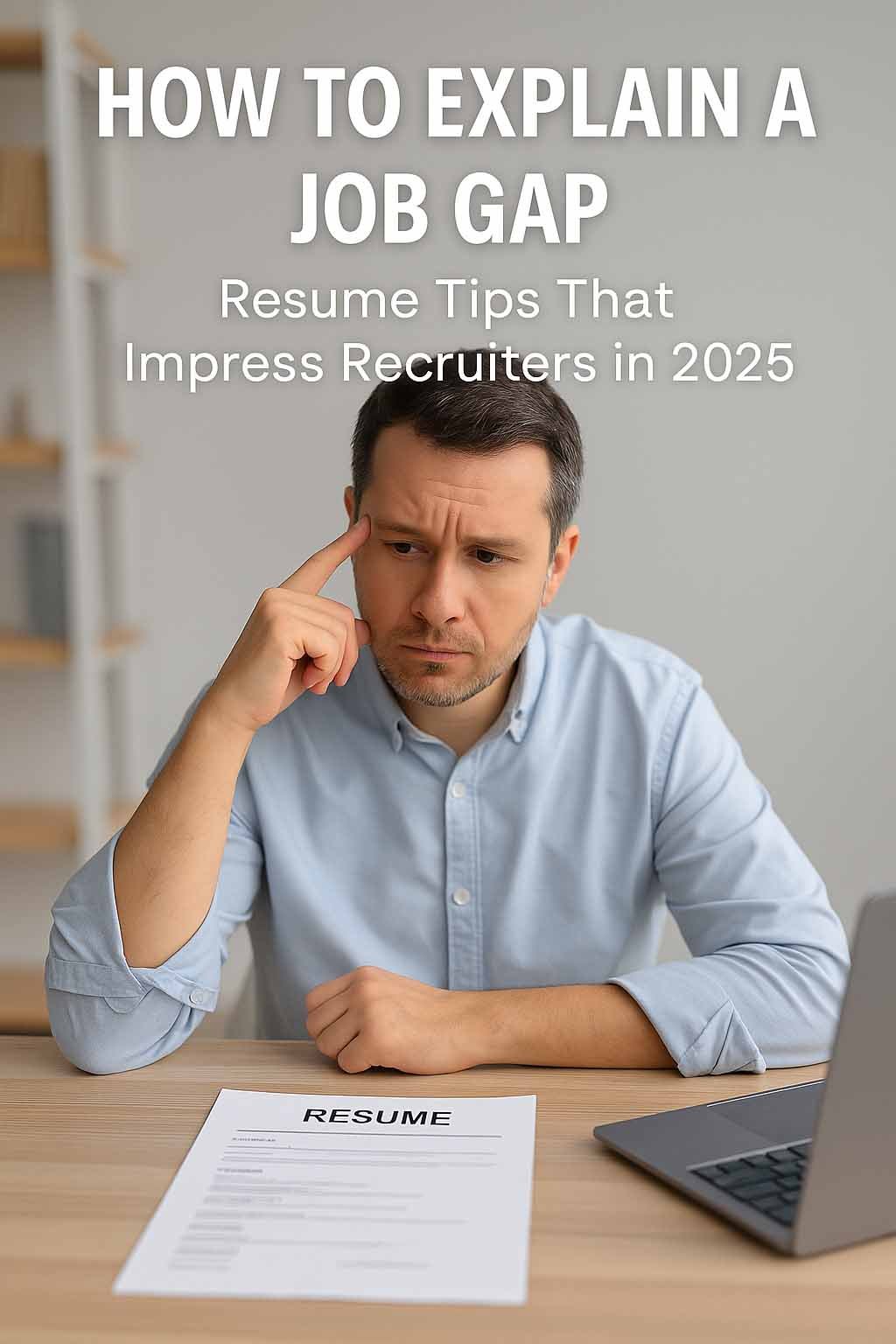Job gaps are more common than ever, yet many job seekers struggle with how to explain a job gap on your resume without hurting their chances. Whether due to layoffs, personal reasons, education, or caregiving responsibilities, employers today are more understanding—as long as the gap is addressed honestly and professionally.
This guide walks you through the best ways to explain a job gap on your resume, what to avoid, and how to turn a gap into a strength during your job search.
Why Job Gaps Matter to Employers
Employers look for consistency and reliability in a candidate’s employment history. A gap doesn’t automatically disqualify you, but unexplained or poorly framed gaps can raise red flags about your commitment, skills, or professionalism.
Common Reasons for Employment Gaps
Before explaining the gap, identify the reason behind it. These are some acceptable and often understood reasons:
-
Layoffs or company closures
-
Health issues (personal or family-related)
-
Pursuing higher education or certifications
-
Maternity/paternity leave or caregiving
-
Starting a business or freelance work
-
Relocation or immigration processes
-
Career change or upskilling
How to Explain a Job Gap on Your Resume
1. Be Honest But Strategic
Always tell the truth, but frame the gap in a way that emphasizes growth, learning, or value.
Example:
Instead of writing “Unemployed,” write “Career Break – Pursued skill development and freelance projects.”
2. Use Dates Wisely
You don’t always need to include month/year. Listing only the year can sometimes minimize short gaps.
Example:
Software Engineer, ABC Ltd. | 2021–2023
Skill Development & Freelance Projects | 2023–2024
3. Add a Career Break Section (If Needed)
If your gap lasted more than six months, consider including a “Career Break” or “Professional Development” section.
Example:
Professional Development | 2023–2024
-
Completed Google Project Management Certification
-
Volunteered as tech consultant for non-profit
-
Attended industry workshops and webinars
4. Highlight Transferable Skills
If you gained soft skills, certifications, or industry knowledge during the gap, mention it.
Example:
“During my break, I enhanced my communication skills through client interaction as a freelance designer and completed two certifications in UX/UI design.”
5. Prepare a Brief Explanation for Interviews
Hiring managers may bring up the gap. Be ready with a 1–2 sentence explanation that shows confidence.
Example:
“I took time off in 2023 to care for a family member, and during that period, I stayed active in my field through freelance projects and online learning.”
What to Avoid When Addressing a Resume Gap
-
Don’t lie or hide it: Employers often verify employment dates. Dishonesty can cost you the job.
-
Don’t overshare: Avoid giving personal or emotional details, especially in writing.
-
Don’t leave it unexplained: A blank period on your resume invites doubt.
-
Don’t be defensive: Own your career path and focus on how you’ve stayed productive.
Tips to Minimize the Impact of a Job Gap
-
Tailor your resume to the job: Focus on skills and achievements that align with the role.
-
Use a hybrid or functional resume format: This highlights skills over chronology.
-
Add a cover letter: Explain the gap briefly and reinforce your enthusiasm for returning to work.
-
Stay active on LinkedIn: Keep your profile updated, share articles, or post about your learning.

